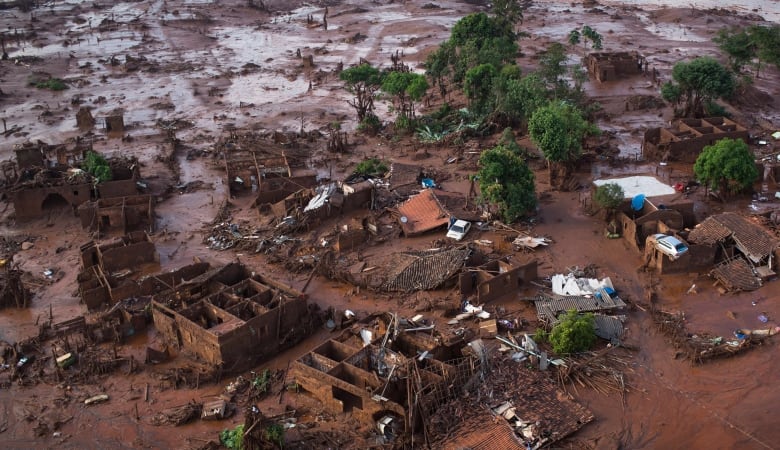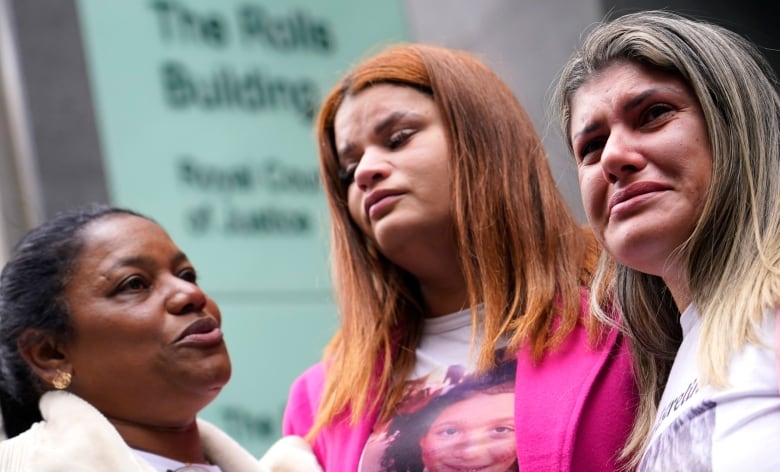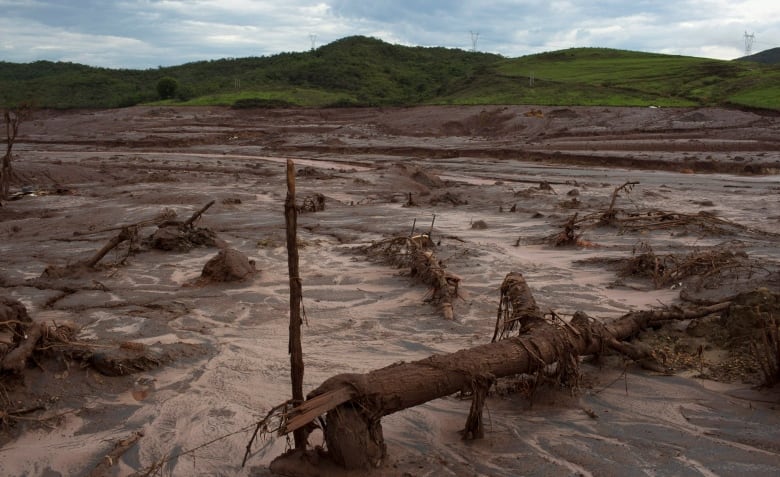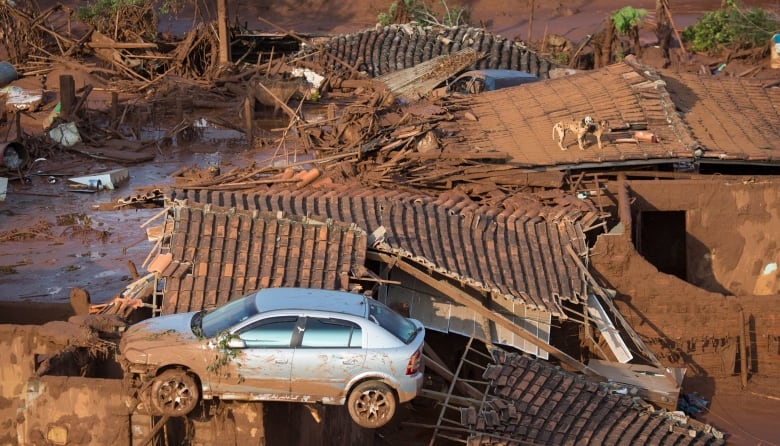
Victims of Brazil’s worst environmental disaster took their case for compensation to a U.K. court Monday, almost nine years after tons of toxic mining waste poured into a major waterway, killing 19 people and devastating local communities.
The class-action lawsuit at the High Court in London seeks an estimated 36 billion pounds ($64.6 billion Cdn) in damages from the global mining giant BHP. That would make it the largest environmental payout ever, according to Pogust Goodhead, the law firm representing the plaintiffs.
BHP owns 50 per cent of Samarco, the Brazilian company that operates the iron ore mine where a tailings dam ruptured on Nov. 5, 2015, releasing enough mining waste to fill 13,000 Olympic-size swimming pools into the Doce River in southeastern Brazil. The case was filed in Britain because one of BHP’s two main legal entities was based in London at the time.
“BHP is a polluter and must therefore pay,” attorney Alain Choo Choy said in written submissions.

BHP attorney Shaheed Fatima said in written submissions that the claim has “no basis,” adding that BHP did not own or operate the dam and “had limited knowledge of the dam and no knowledge that its stability was compromised.”
The river, which the Krenak Indigenous people revere as a deity, was polluted so badly that it has yet to recover. The disaster killed 14 tons of freshwater fish and damaged 660 kilometres of the Doce River, according to a study by the University of Ulster.
Village erased by environmental disaster
When the Fundao dam broke, sludge washed over Bento Rodrigues, once a bustling village in Minas Gerais state. Now, it resembles a ghost town.
A few white tiles are the only remnants of the house where Monica dos Santos, 39, lived with her parents near the Catholic church that also was destroyed. She has become one of the principal activists seeking full reparations.
“It’s not just the destruction of Nov. 5. The destruction since, I often say, has been worse,” she said. Some survivors turned to alcohol, others to drugs, and personal relationships were strained, sometimes to the breaking point.

The trial comes days after BHP announced that the company and its partner in Samarco, Vale SA, were negotiating a settlement with public authorities in Brazil that could provide $43.8 billion Cdn for people, communities and the environment damaged.
Vale on Friday said the sum included $10.9 billion already paid, $24.9 billion to be paid in instalments over 20 years to Brazil’s federal government, Minas Gerais and Espirito Santo states and municipalities, and $8 billion in “performance obligations” by Samarco, including individual compensation.
Last month, President Luiz Inacio Lula da Silva told Radio Vitoriosa, a local station in Minas Gerais, that his administration aims to reach an agreement with the mining companies by the end of October. Claims were filed by Brazil’s Federal Public Prosecution Office and public authorities.
Melbourne, Australia-based BHP said it believes the U.K. action is unnecessary because it duplicates matters covered by reparation efforts and legal proceedings in Brazil, but said it would continue to defend it.

Pogust Goodhead said the potential settlement shouldn’t have any impact on the case.
“Such timing only proves that the companies responsible for Brazil’s biggest environmental disaster are determined to do everything they can to prevent the victims from seeking justice,” the firm said in a statement.
Survivors still haunted years later
Survivors from Bento Rodrigues have moved to a new village of the same name a half-hour drive away. Colourful, multi-storey houses line freshly paved streets.
Priscila Monteiro, 36, moved in three months ago but said she doesn’t feel at home.
“It feels like I’m just passing through and I’m going to go back home any minute,” she said.

Monteiro was pregnant when the dam broke on her birthday. She and her two-year-old were pulled from the toxic slime and survived, but she had a miscarriage. Her five-year-old niece, Emanuelle, died.
“For me, the day that was supposed to be a celebration has become a day of mourning, forever,” she said, crying.
Monteiro says she hopes the trial in London will lead to recognition of the damage.
“God put the people from London on our path because there is no justice in Brazil. Now our last hope is them,” she said.